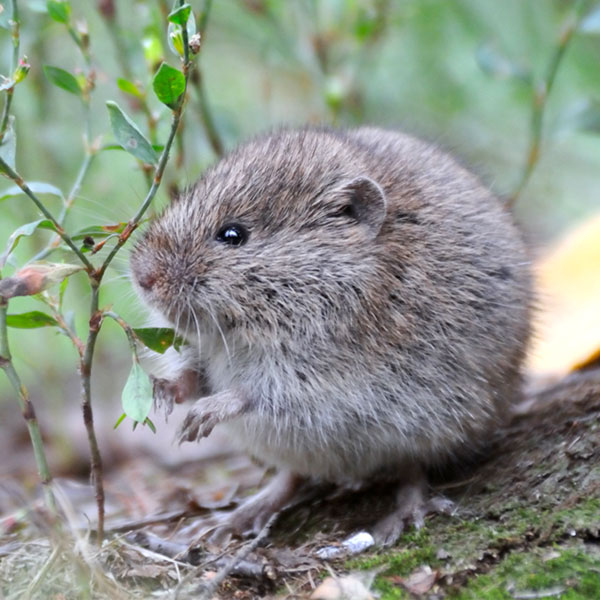Protect Your Grass: Efficient Vole Control Techniques
Protect Your Grass: Efficient Vole Control Techniques
Blog Article
Vole Insect Control Demystified: A Full Summary of Problem Discovery and Effective Therapy Methods
From refined indications of infestation to the execution of targeted control measures, browsing the world of vole parasite control requires a mix of understanding and tactical activity. In this comprehensive review, we will certainly check out the nuances of vole problem detection and dive into the realm of reliable treatment methods that can secure your rooms from these below ground hassles.
Recognizing Vole Behavior Patterns
Understanding the intricate habits patterns of voles is important for properly implementing pest control steps in agricultural and property setups. Voles, tiny rats that resemble computer mice however with stouter bodies, are well-known for their rapid recreation prices and starved hungers for plants. By delving into their actions patterns, bug control specialists can gain valuable insights into vole choices, vulnerabilities, and behaviors.
Voles are mostly herbivores, feeding upon a vast array of plants, roots, origins, and bulbs. They are also prolific tunnelers, creating elaborate underground burrow systems for nesting and foraging. By understanding these routines, insect control experts can tactically place catches and lure terminals along vole paths and access points, boosting the likelihood of effective eradication.
In addition, expertise of vole actions patterns can aid in developing precautionary procedures to discourage future problems. By resolving factors that attract voles, such as dense greenery cover and easily available food resources, residential property proprietors can make their properties much less welcoming to these harmful parasites - vole control. In final thought, a comprehensive understanding of vole behavior is vital in designing sustainable and effective insect control approaches
Identifying Indicators of Vole Invasion
Effective vole parasite control begins with promptly acknowledging the obvious indications of vole infestation on residential properties. Additionally, vole droppings are another clear sign of problem.
In enhancement to droppings and runways, munch marks on tree bark and plants are additionally indications of vole activity. Voles have a behavior of gnawing on the bases of shrubs and trees, which can create damages and potentially eliminate the plants. Moreover, the existence of burrow openings in the ground indicates an active vole populace. Vole burrow entryways are typically small and located in verdant or mulched areas.
Being alert for these indications can assist homeowner detect vole problems early and take proper pest control steps to avoid additional damages.
Carrying Out Targeted Control Steps
What details strategies can be used to successfully execute targeted control measures for vole insect monitoring on buildings? Executing targeted control measures for vole pest management needs a multi-faceted approach that integrates both avoidance and obliteration approaches. Among the essential approaches is habitat modification, which includes removing vole-friendly environments such as tall grass, weeds, and particles near buildings. Setting up obstacles like hardware towel or gravel around yard beds and tree trunks can additionally assist hinder voles.
Capturing is one more efficient approach for managing vole populations. Live catches can be tactically positioned along vole paths or delve entrances, baited with peanut butter or apple slices. Once captured, voles must be humanely eliminated to a various place to avoid reinfestation.
Rodenticides can be used as a last option for extreme invasions, yet care must be exercised to avoid harm to non-target pets. It is essential to comply with all security guidelines and policies when making use of rodenticides for vole control.
Eco-Friendly and all-natural Treatments
The fostering of environmentally aware practices can play a pivotal role in taking care of vole check populaces without causing injury to the ecosystem. Environment-friendly and all-natural treatments use a sustainable method to vole parasite control, reducing the usage of unsafe chemicals and promoting biodiversity in the affected areas.
One effective all-natural approach is making use of killer pee or predator decoys. Predators like owls, snakes, and foxes are the vole's all-natural enemies. By tactically positioning killer pee or decoys around the plagued areas, voles may be discouraged from working out in those areas.
In addition, growing vole-resistant plants can assist in lowering vole damages. Plants such as daffodils, crown imperials, and Siberian squill are known to be unappealing to voles and can function as all-natural repellents.
Additionally, developing physical obstacles like cord mesh or crushed rock around susceptible plants can prevent voles from accessing them. These barriers can assist protect yards and landscapes without posing any type of threat to the atmosphere or various other non-target species. By including these natural and environmentally friendly remedies, vole infestations can be handled properly while keeping ecological balance.
Long-Term Avoidance Methods
To sustainably address vole invasions in time, applying aggressive measures is essential for lasting avoidance approaches. One effective approach for lasting prevention is environment alteration. vole pest control. By minimizing thick greenery, compost, and clutter around structures, you can make your building much less attractive to voles. Furthermore, installing obstacles like fencings or below ground cable mesh can help deter voles from attacking your garden or grass.
Normal monitoring of vole task is crucial for early discovery of any type of indicators of invasion. Establishing up vole traps can aid in managing their population prior to it comes to be a full-on invasion. It is also crucial to seal any type of access points to buildings or frameworks to stop voles from gaining accessibility.

Conclusion
Finally, recognizing vole habits patterns, determining signs of infestation, applying targeted control actions, using all-natural and environment-friendly treatments, and executing long-term avoidance strategies are crucial action in efficiently managing vole problems. By being aggressive and taking the essential steps to deal with Learn More vole issues immediately, people can click for more successfully manage and avoid vole infestations in their residential or commercial properties.

Report this page